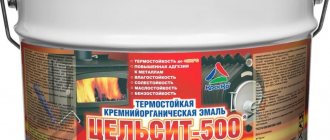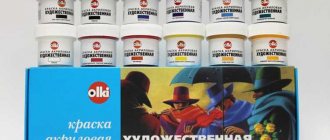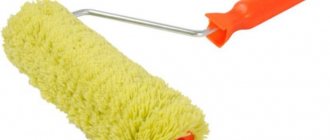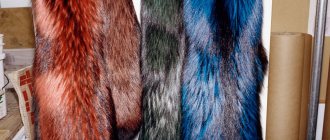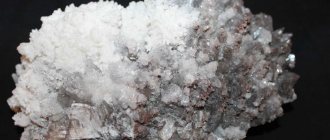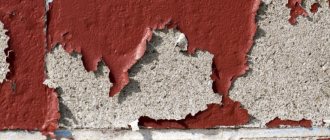Stainless steel, despite its properties, requires protective treatment. Applying paint to a stainless steel surface is associated with certain difficulties. The article will discuss how and with what to paint stainless steel; the advantages of powder paint and the subtleties of the painting process itself will be revealed.
Features of stainless steel
Corrosion-resistant steel is a widely used material. The variety of physical properties of stainless steel is explained by the addition of various impurities during its production. The characteristics of the material are affected by the amount and type of additives. Therefore, among the brands there are alloys that over time (with prolonged use in an aggressive environment) lose their anti-corrosion properties. For this reason, a problem arises regarding methods of protection, and painting becomes a solution. To understand how to paint stainless steel, you need to find out what properties this material has. Features of stainless steel in comparison with other metals and alloys:
- Increased strength. Due to its strength, steel copes with significant physical loads without losing its characteristics (primarily its shape).
- Impact resistance. Changes in operating conditions and aggressive environments do not lead to loss of properties, which increases the service life of stainless steel structures.
- High temperature resistance. Due to its heat resistance, steel does not lose its shape, does not change dimensions and retains its properties at high temperatures.
- Environmentally friendly. Minimized oxidation processes reduce the level of harmful effects on the environment. The absence of harmful impurities contributes to the fact that stainless steel is widely used in the food industry.
- Corrosion resistance. A number of alloys are not susceptible to rust even when exposed to alkali and acid.
- View. Stainless steel is clean, shiny and retains these properties for a long time.
Pay attention to: Transforming an old cabinet into a new one with your own hands
The specific grade of steel is selected taking into account the purpose of use. The abundance of additives makes it possible to obtain the necessary alloys. In some cases, additional processing is required, for example, painting stainless steel. The characteristics of the material being painted make it appropriate to use powder coatings.
Stainless steel
What else can you coat stainless steel with?
The steel surface can also be coated with high-quality oil paint, a metal-grade wax coating, and even nail polish. Naturally, the latter can only make inscriptions and otherwise decorate the surface, and not paint it fully.
You can also use patina. These chemical materials are created to change the color or surface of a metal. However, some of these products are applied cold and some are applied hot. After application, the surface is often coated with wax.
What is powder paint
Powder coatings are mixtures of solid particles, consisting of many components. The basis is a powder-type polymer and a coloring pigment. Depending on the area of application of the paint, the components of the composition are different. The main additives are:
- fillers (aluminum oxide, titanium dioxide);
- hardeners (for example, epoxy resin);
- resins that create a protective film on the treated surface;
- acrylates.
Stainless steel paint in powder form does not contain solvents, so it is not a flammable or toxic paint composition. If the technology for painting a polished stainless steel surface is followed, the harmful impact on the environment and humans tends to zero. The advantage of powder paint is its flowability that persists over time; paintwork components do not thicken or stick together. This property eliminates the need to dilute the paint before use. Flowability also determines the surface treatment technology - the coloring composition is sprayed onto stainless steel. The paint particles receive a charge, while the workpiece carries the opposite charge. Therefore, the powder sticks to the surface. Subsequently, the adhered particles are subjected to heat treatment in an oven (polymerization).
Powder paint
Painting Tips
In order to avoid the mistakes described above, you need to know what standards for work must be observed. The result will be of high quality if you follow these tips:
- The temperature can vary from +5 to +35 degrees, the humidity in the room is also important, it should not be higher than 80%;
- They paint not with brushes or a roller, but with a spray bottle or spray can, making even stripes that are applied overlapping;
- The tool should be at a distance of 20 cm from the product, while the surface is painted quickly;
- Several layers are made, after painting each one, wait for the previous one to dry completely;
- It is also preferable to apply varnish on top of the paint; it will improve the glossy effect and create additional protection for the material.
The tool should be at a distance of 20 cm from the product, and the surface will be painted quickly.
It is possible to paint stainless steel, the main thing is to approach the process thoroughly. After all, the material has a poor degree of adhesion; to improve it, a preparatory stage is carried out, which will largely determine what quality of coating will ultimately be obtained. It is also important to choose a suitable paint and varnish; not all materials can be used for this purpose. The article described the options of paints that can be used. Compliance with the rules of work will help to obtain a beautiful and protective coating of stainless steel.
Difficulties in painting stainless steel
Powder coating of stainless steel is a method that meets the characteristics of the surface being treated. Smooth steel rejects the approach of using conventional liquid paints and varnishes, since the latter simply do not adhere to it. The adhesion of stainless steel is low, which adds to the complexity of painting. The solution to the problem is the choice of an adequate coloring composition and adherence to technology. At home, painting stainless steel with powder is difficult. Additional equipment will be required, namely an installation for imparting a charge to paint particles, a spray gun, and an oven for polymerizing the paint composition. It is commercially available, but if you have the skills and experience, you can make it yourself. Powder coating is a technology most often used in industrial settings.
Powder painting
Preparatory stage
Powder paint for stainless steel should be applied to the prepared surface. The preliminary stage involves the following:
- Inspection of processed parts to identify defects (scratches, chips). Shallow imperfections on a smooth stainless steel surface can be preserved to improve adhesion.
- Making the material being painted rough. If we are talking about small parts, then a metal brush is suitable for processing. In other cases, it is better to use a grinder with an appropriate attachment. A medium-grit abrasive disc will do.
- Cleaning the part from processing products. A wet cloth is suitable for removal. The part must be thoroughly wiped.
- Degreasing. Grease stains on stainless steel will impair paint adhesion, so alkaline or acidic compounds are used. When degreasing with such compounds, it is necessary to observe safety precautions (ventilate the room, wear gloves and a respirator). At home, you can degrease the part using a soda solution (4 grams of soda per 100 ml of water).
- Drying the part before painting.
Please note: High-quality painting of heating radiators with powder paint with hot polymerization
Personal protective equipment is required during the preparatory stage and during painting.
Cleaning and degreasing the surface
How difficult is it to apply paint?
Stainless steel interior items have a smooth surface. If you apply paint on them in the usual way, then nothing will work. Metal has poor adhesion. The correct choice of coloring material and preparation of the steel surface will be the key to high-quality application of the dye - this is the answer to the question of whether it is possible to paint stainless steel.
Applying dye to stainless steel, copper, aluminum, and galvanized metal should also be done to prevent corrosion on their surface. Although rust appears to a lesser extent. The conclusion suggests itself: such metals also need protection and painting.
Painting process
In industrial conditions, before painting, the parts being processed are washed in chambers and dried in ovens; a conveyor process is organized there. At home, prepared stainless steel can be dried on a table or on a radiator. The powder is applied by spraying from a gun. The equipment is made in such a way that the paint particles receive one charge, and the part being painted receives the opposite charge. Under such conditions, the powder adheres to the stainless steel in an even layer. Industrial painting is completed quickly, but at home this process will take longer. The technology for applying paint on stainless steel in powder form involves electrostatic or turbostatic spraying. The first option involves an external charge source, the second method allows particles to be charged by rubbing them against the walls of the turbine. The second stage of painting is melting the paint in an oven at a temperature of 150-220 degrees. Powder particles melt at high temperatures and form a film on stainless steel, which subsequently hardens. Industrial polymerization chambers are designed for changing reflow conditions (sudden increase and decrease in temperature, inclusion of recirculation of air flows, etc.). Do-it-yourself ovens are more primitive, but purchasing industrial equipment for personal (usually single) purposes is impractical.
Powder coating process
Recommendations for work
To simplify the process and get the desired long-lasting and attractive result, you should follow the recommendations below:
- You can work at temperatures from +5 to +35 degrees, humidity should not exceed 80%;
- Applying paint with a brush or roller is not possible; only a spray gun is suitable. They move in straight lines, each new strip is made with a slight overlap with the previous one. You need to work with quick movements to ensure the layer dries evenly. The spray gun should be at a 20-centimeter distance from the product, the angle should be made right;
- The dye must first be stirred and then poured into the spray bottle compartment;
- Application is carried out in two layers, each must dry completely before applying the next one;
- To obtain better resistance to environmental factors, you can coat the surface with yacht varnish or another transparent type.
Good adhesion will be obtained when the surface of the stainless steel is polished without flaws.
Application is carried out in two layers.

